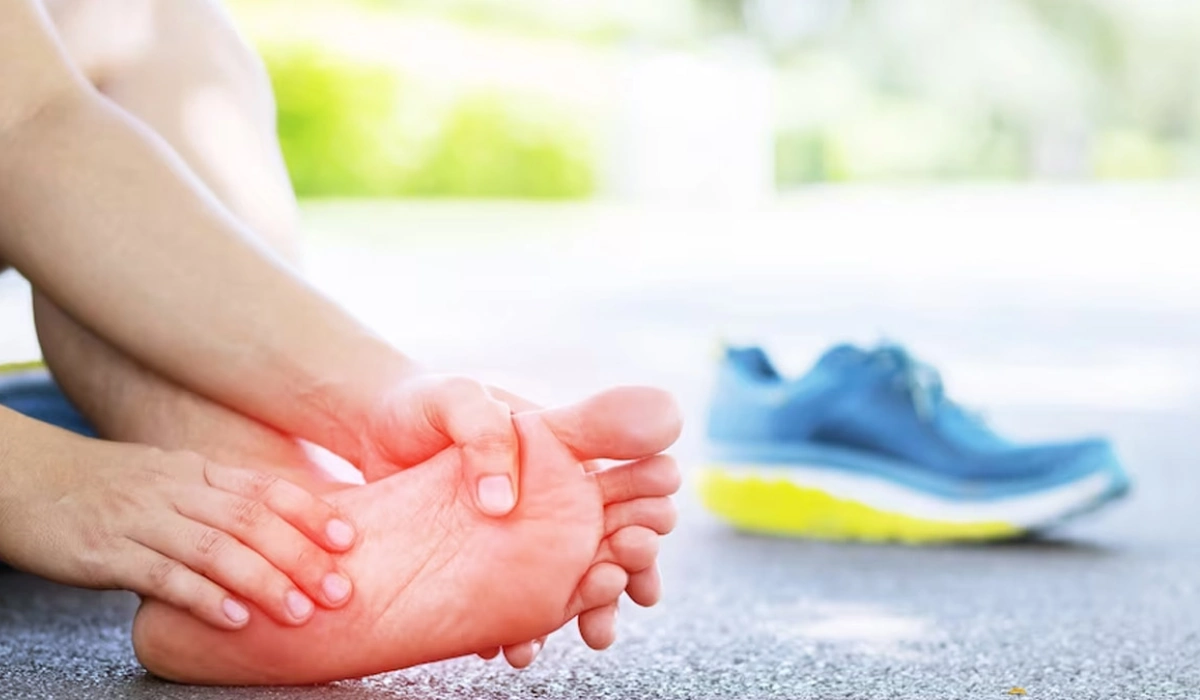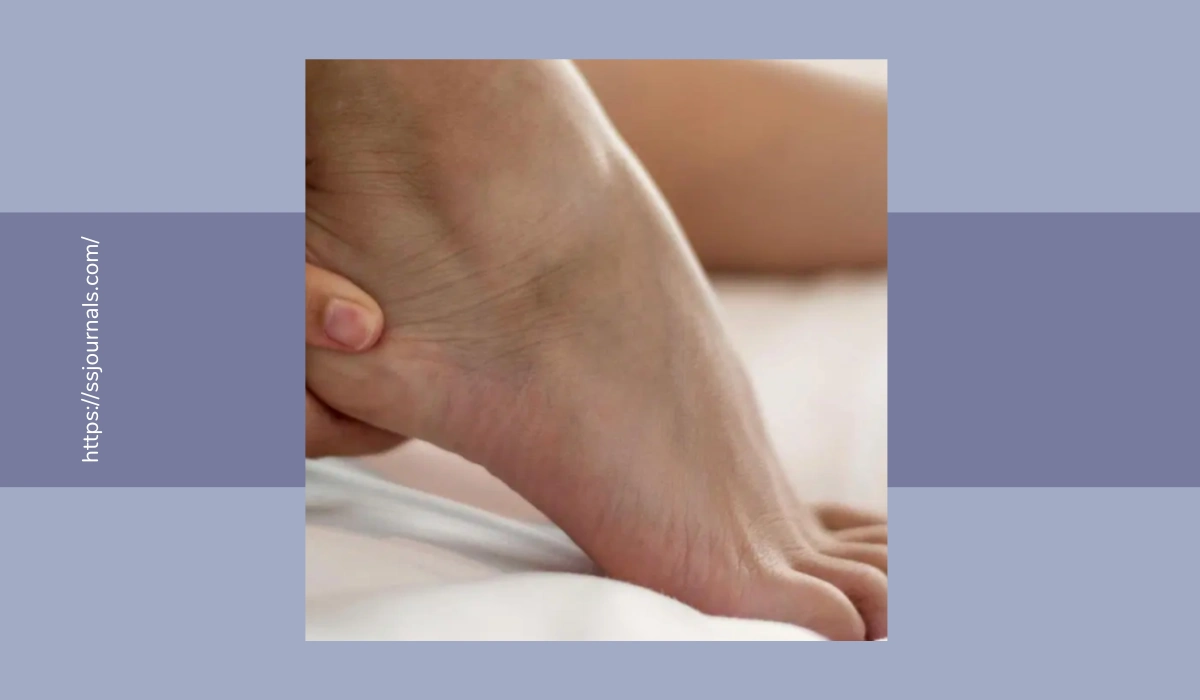Our feet take the brunt of our daily activity without awareness until they hurt. Our feet are tested daily by standing, walking, and running. After standing for long hours, we need to revitalize and comfort our feet to get back in motion.
Let’s find ways to relax those tired toasties. Addressing the fundamental causes of foot pain after standing requires understanding why.
How to Treat Sore Feet?
After a long day at work, relaxing with your feet up looks like a great method to relax and rest your feet. This conventional method is calming, but there are other, effective ways to relieve standing-related pain and strain.

The advantage is that you can use some of these remedies immediately, giving you rapid relief. To keep your feet resilient all day, make proactive efforts to reduce foot strain.
➡️Soak Those Sore Soles
A calming foot bath helps rejuvenate fatigued, achy feet. Start with filling a basin or tub with warm water to relax your feet. A spoonful or two of Epsom salts in the water enhances this relaxing ritual and relaxes muscles.
Dip your feet in this healing mixture for 10 minutes to let the Epsom salts’ warmth and minerals work their magic. The salts reduce inflammation and muscular tension, relieving your tired feet. A colder bath may rejuvenate your feet if they’re heated or swollen. This can reduce inflammation and relieve standing or strenuous exercise pain. Find the right water temperature for your tired feet.
➡️Give Your Feet A Proper Stretch
Relax your ligaments and muscles with stretching exercises after a soak. Gentle, effective movements that enhance flexibility and prevent spasms are beneficial. Starting with ankle rotations, guide your feet through circular motions after soaking. This easy workout relaxes ankle ligaments and muscles, improving mobility. While rotating your ankles, enjoy the calming effects of the soak’s warmth, which enhances this mild stretch.
Wiggle your toes slowly, focusing on each one. This slight movement works foot muscles and joints, increasing flexibility. Toe wiggling increases blood flow and relieves stiffness, further relaxing you. Calf stretches against a wall are a basic way to lengthen and release tight muscles. Face a wall with hands on it for support. To stretch more, extend one leg behind you with the heel on the ground and lean forward. Stay here for a while, feeling the slight pull on your calf muscles. With the second leg, repeat the stretch to release tension evenly.
➡️Keep Those Feet Active!
Prioritizing foot workouts is essential for foot health. Use a range of activities to strengthen, flex, and maintain foot health. Try picking up little objects with your toes. This simple but effective workout develops foot muscles and improves toe dexterity. Practice toe pickups to enhance coordination and mobility, building a strong foot base.
Add ankle pumps to your regimen for fluidity. Controlled ankle movement while seated or lying down. This easy workout improves circulation, decreases stiffness, and preserves ankle flexibility. People who sit or stand a lot benefit from ankle pumps. Roll your feet on a tennis ball for a relaxing foot massage. Pressure points are massaged to relieve tension and improve blood circulation. Enjoy the rejuvenating feeling of rolling the ball under your feet with slight pressure.
➡️Arch Supports For Added Comfort
Arch supports are important if you have flat feet, high arches, or chronic foot pain. Arch supports can improve foot health whether you have low or high arches. Custom orthotics from a podiatrist can improve foot support for chronic foot discomfort. These custom inserts are built to fit your foot shape and walking patterns. A custom solution that meets your demands provides unmatched support and reduces foot impact when walking and standing.
Purchasing arch supports or custom orthotics is a proactive foot health measure. These supports can improve your daily comfort and well-being, whether you’re treating pain or preventing it. Podiatrist consultation guarantees that your option fits your foot dynamics, ensuring long-term foot support and vitality.
➡️Buy Proper Footwear
Shoe selection is an investment in foot health. Choose comfortable, supportive shoes that fit properly. Regularly measuring your feet is important, especially if they alter size or shape. This proactive method keeps your footwear adapted to your feet’ changing demands, producing a healthy and accepting environment.
Compression socks can relieve lower foot and leg pressure in addition to well-fitted shoes. Gentle pressure from these socks improves blood circulation. Compression socks might improve comfort and vascular health if you’re on your feet a lot or have circulation concerns.
➡️Reduce Calluses And Corns
Calluses and corns must be treated regularly to avoid pain. Implement a regular maintenance plan to address these foot issues. This easy but effective technique can prevent these concerns from worsening, ensuring your feet’s health.
Start care by bathing your feet in warm water. This makes calluses and corns simpler to treat by softening tough skin. Let your feet soak long enough to reap the benefits of this pre-step. Gently exfoliate afflicted areas with a pumice stone or emery board. Focus on slow, steady motions to avoid pressure. This thins calluses and corns, making them smoother and less painful.
Moisturize your feet after exfoliating. This procedure helps prevent calluses and corns by keeping skin hydration. Choose a moisturizing lotion or cream and cover the problem areas well. Socks prevent and preserve sweat from the exercise. Keeping the skin smooth and supple reduces calluses and corns. Natural fabric socks are airy and comfortable. Be consistent with this foot care program for best results.
➡️When To Seek Professional Help
Quick podiatrist appointment for persistent foot discomfort or worrying signs is a proactive approach to foot health.
Professional counsel guarantees complete care and timely action for foot health, whether treating acute disorders or chronic illnesses like diabetes.
Conclusion
Simple yet effective ways can relieve foot pain from standing all day. You may improve your footwork by incorporating these practices into your everyday routine. Encourage foot health by wearing supportive shoes, taking short breaks to stretch and elevate your feet, and using insoles for comfort.
Foot health is important, so seek professional help when needed. Consulting a doctor or podiatrist for prolonged pain, discomfort, or particular symptoms provides proper treatment. Keep your feet happy and healthy with preventative measures and expert advice.
Investing in foot health can improve your comfort and quality of life, especially if you spend long hours on your feet.

